Content
- Getting deeper
- Nondimensionalization
- Poincaré section
- Fixpoints
- Stability study
- Animations
A more detailed study of the chaotic pendulum
Poincaré section
To characterise our system's behaviour, we will need to use a Poincaré section [ref1] [ref2]. The Poincaré sections are subspaces that are reccurently and transversally crossed by the system.
In our case, the chosen Poincaré is a part of the $yOz$ plan which, when passed through by the mass, will read the values of $\theta$ and $\dot{\theta}$.
 After having taken a significant amount of points, we may trace our Poincaré section's graph. This graph may be :
After having taken a significant amount of points, we may trace our Poincaré section's graph. This graph may be :
- a unique point: the system is periodic;
- a small amount of points: the system is periodic;
- a closed curve: the system is quasi-periodic;
- a cloud of points: the system is chaotic.
Here are some examples of Poincaré sections :
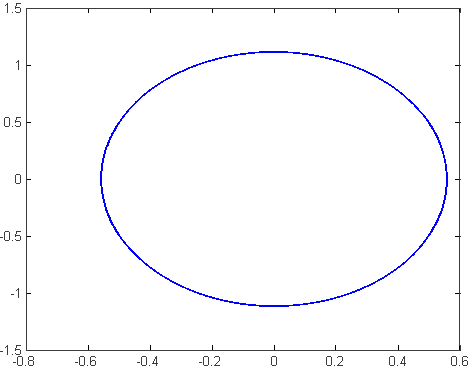 | 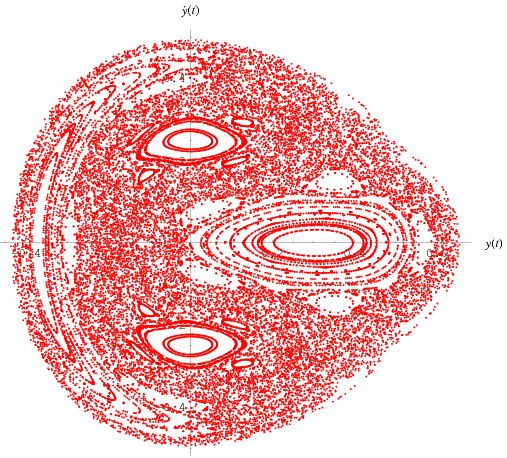 |
Quasiperiodic system Image LASIN, uni-lj $[1]$ | Chaotic system Image N. De Leon $[2]$ |
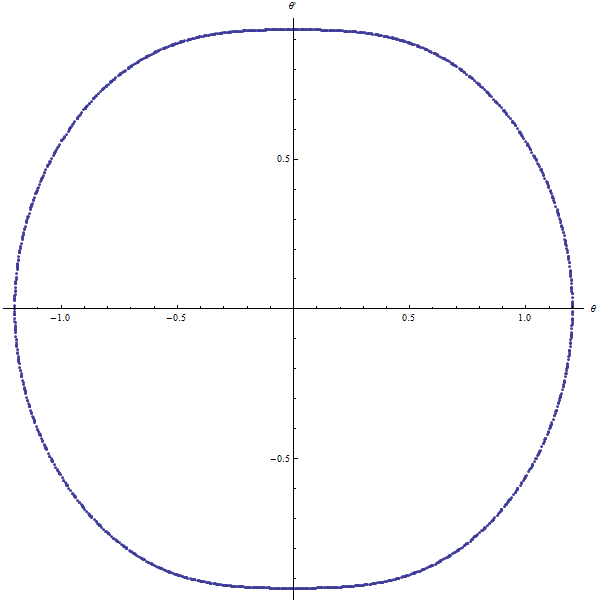 | 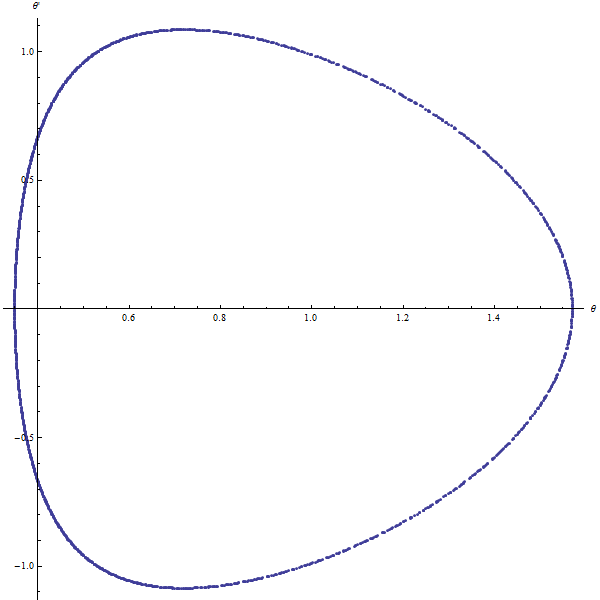 |
spherical pendulum $(\alpha=0)$ | spherical pendulum |
We can see here that our spherical pendulum is quasi-periodic.
 | 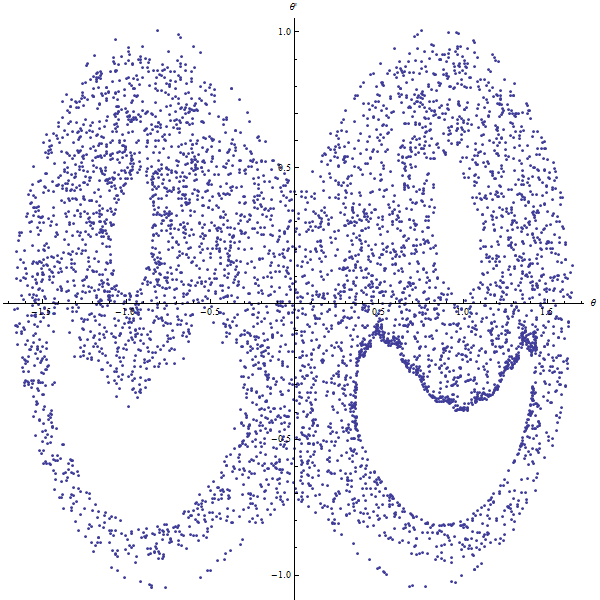 |
chaotic pendulum | chaotic pendulum |